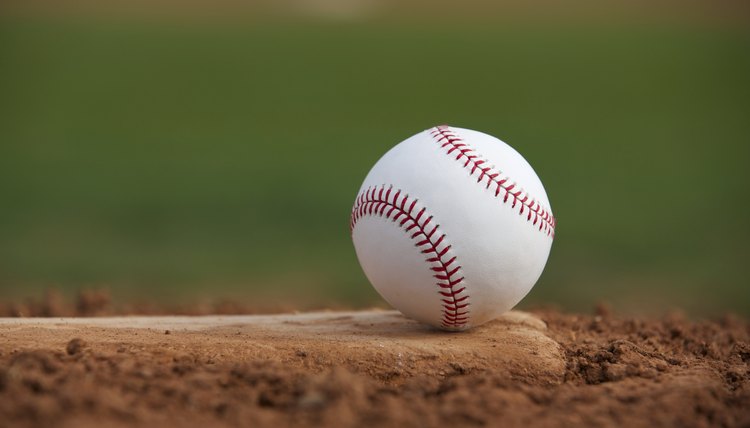The Effect of Temperatures on Baseballs

Ever since the Colorado Rockies started playing baseball in a stadium that sits more than a mile above sea level, the effect that temperature and altitude have on a baseball has become a hot topic among baseball fans and players. A study conducted by P.J. Drane and J.A. Sherwood of the Baseball Research Center at the University of Massachusetts has proven that the weather and surroundings do affect how fast and how far a baseball will fly.
Hot and Cold
The University of Massachusetts study conducted tests on batted balls that were cooled or heated to temperatures ranging from 40 degrees Fahrenheit up to 120 degrees F. The results showed that the lower the temperature, the slower the ball traveled after making contact with the bat. The 40 degree balls traveled at a velocity 2 percent less than the 120 degree balls. This means a ball that would have traveled 400 feet at 120 degrees would travel 392 feet instead. That can be the distance between a home run and an out.
Pitch Speed Effect
While temperature certainly affects the speed of a baseball, the speed of the pitch actually has just as much effect. During the study conducted at the University of Massachusetts, two sets of balls were used. One set of balls was pitched at 60 mph, while the other set was pitched at 100 mph. The 60 mph balls showed a significant differential in batted balls for each temperature level, whereas the 100 mph balls showed little to no change from level to level. The faster a pitch is traveling, the less likely the temperature affects the ball.
How to Offset Temperature Advantage
The temperature of a ball is directly affected by the ambient temperature. For example, more teams hit home runs when playing in Arizona than when playing in most other parks. To offset the heat advantage, University of Illinois physics professor Alan Nathan, suggests weighing the ball down with a humidifier to decrease the number of home runs.
Misconceptions
Many people believe that the balls in Colorado fly farther because it's cold, or that it has something to do with the humidity level. As the University of Massachusetts study demonstrated, low temperature reduces the speed of the batted ball, and humidity level of the balls can decrease travel distances. Nevertheless, ball players find that they can bat a ball farther in Colorado than in many other states. The reason for the Colorado advantage is altitude. Thin air, such as that in high altitudes, reduces friction on the seams of the ball, allowing the batted ball to travel faster.
Trying to Level the Playing Field
The answer to whether the temperature will have an effect on a baseball is a resounding yes. The hotter the ball, the farther it travels. One way to combat ambient-temperature effect if you play baseball in hot or cold weather is to store all of the balls not in play in a neutral location at a controlled temperature. This is still only a temporary solution because the balls will adjust to the external temperature once they are taken outside.
References
Resources
Writer Bio
Nicholas Bragg, a lifelong athlete and certified personal trainer, attended four separate colleges from Maryland to California, finishing in 2004. Named to the CEO's club as an elite performer at Intuit in 2009, he changed careers in 2010 and now contributes writing to Mahalo and SportswithM.
